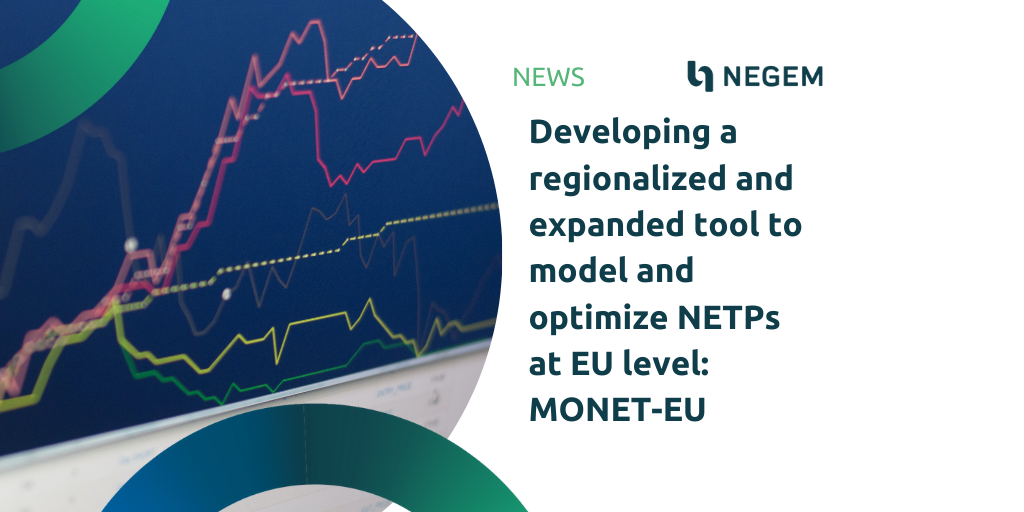One of the objectives of NEGEM is to produce a quantitative analysis of the effectiveness, potential and impacts of deploying Negative Emission Technologies and Practices (NETPs) in the EU.
In this context the Modelling and Optimisation of Negative Emissions Technologies (MONET) model, is used to simulate and optimize the performance of NETPs under various objective functions. This mathematical model identifies global-scale Bioenergy with Carbon Capture and Storage (BECCS) deployment pathways, to meet a given Carbon Dioxide Removal (CDR) target within the 2020-2100 timeframe, across 5 macro regions: China, Brazil, the EU, USA and India.
MONET Framework overview
The MONET framework evaluates the technical, economic and environmental performance of BECCS along their whole value chain, from the biomass supply chain to the CO2 storage activities. For each region, the model identifies the optimal BECCS value chain configuration to remove a certain amount of CO2 – that is the region-specific Carbon Dioxide Removal (CDR) target – while minimizing sustainability trade-offs. Therefore, this model can be run to minimize total system costs of BECCS deployment under different sustainability constraints, and according to multiple criteria: for example, to minimize land and water use and maximize carbon efficiency.
MONET-EU : the regionalization process
MONET; as it currently exists has a high-level treatment of individual states to ensure computational tractability. As part of NEGEM activities, researchers at Imperial College of London are working to achieve a more granular representation of the individual EU member states.
The MONET-EU database was developed from the MONET model by increasing the level of detail of spatial data to obtain a country-level representation for EU Member States.
The optimisation process consisted in combining different datasets and then performing spatial analysis through GIS softwares: from one side, country level data related to key parameters (e.g. climate, land cover and use…) were collected from statistical databases, then the MONET framework spatial data related to the EU macro-region were disaggregated by country.

Current results and further steps
The output of the analysis includes relevant figures at country level, such as yields of biomass feedstocks, land and water footprint associated with biomass cultivation, carbon intensity of national grids and CO2 storage capacity; moreover, this model allowed to detect best locations for biomass cultivation and processing, to calculate best routes for biomass transportation, as well as best sites for carbon storage.
The work is still in progress and the further enhancements of the existing MONET framework and the MONET-EU tool foresee:
- the integration with the biosphere model LPJmL, by adopting its climate and scenario-specific biomass yields
- the extension of the MONET framework to other NETPs, notably Direct Air Capture Storage (DACCS), biomass pyrolysis for the production of biochar, Afforestation, and Enhanced Whathering (EW).
- The inclusion of Social Licence to Operate (SLO) informations and their political economy implications.
This post is based on a report by Piera Patrizio, Nixon Sunny and Niall Mac Dowell (Imperial College London).


